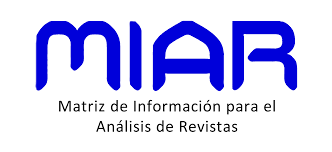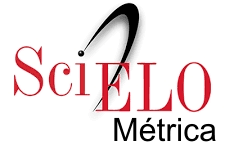Marcadores ecográficos de cromosomopatías en el I trimestre de la gestación: ductus venoso
Keywords:
Marcadores ecográficos, I trimestre, aneuploidia, ductus venosoAbstract
La evaluación Doppler del flujo en el ductus venoso en el primer trimestre ha venido a contribuir con información clínica relevante en las orientaciones a los padres. No sólo se mostró eficaz en el rastreo de anomalías cromosómicas, como la trisomía 21, disminuyendo la tasa de procedimientos invasivos, sino también en el rastreo de cardiopatías congénitas, redefiniendo el grupo de alto riesgo a ser sometido a ecocardiografía precoz. Por su parte, un flujo anormal en el ductus venoso asociado a la translucencia nucal aumentada en uno o en ambos fetos de un embarazo monocoriónico parece una combinación sensible para rastrear precozmente el síndrome de transfusión feto fetal. En todas estas situaciones, el ductus venoso se muestra un marcador eficaz de insuficiencia/disfunción cardíaca.
Downloads
References
Díaz Recaséns J, Plaza Arranz J, Fernández Moya JM. Malformaciones congénitas: clasificación y formas comunes. En: Cabero Roura L. Tratado de Ginecología, Obstetricia y Medicina de la Reproducción. Madrid: Editorial Médica Panamericana; 2003.p. 977-94.
Carreras Moratonas E, Higueras Sanz T. Marcadores ecográficos de cromosomopatías En: Cabero Roura L. Tratado de Ginecología, Obstetricia y Medicina de la Reproducción. Madrid: Editorial Médica Panamericana; 2003.p. 1016-23.
Saltvedt S, Almstrom H, Kublickas M, Valentin L, Grunewald C. Detection of malformations in chromosomally normal fetuses by routine ultrasound at 12 or 18 weeks of gestation-a randomised controlled trial in 39,572 pregnancies. BJOG 2006;113:664-74.
Mavrides E, Moscoso G, Carvalho JS, Campbell S, Thilaganathan B. The anatomy of the umbilical, portal and hepatic venous systems in the human fetus at 14-19 weeks of gestation. Ultrasound Obstet Gynecol 2001;18:598-604.
Kiserud T, Eik-Nes SH, Hellevik LR, Blaas HG. Ductus venosus - a longitudinal Doppler velocimetric study of the human fetuses. J Matern Fetal Invest 1992;2:5-11.
Maiz N, Plasencia W, Dagklis T, Faros E, Nicolaides K. Ductus venosus Doppler in fetuses with cardiac defects and increased nuchal translucency thickness. Ultrasound Obstet 2008; 31:256-60.
Borrell A, Antolin E, Costa D, Farre MT, Martinez, JM, Fortuny A. Abnormal ductus venosus blood flow in trisomy 21 fetusus during early pregnancy. Am J Obstet Gynecol 1998;179:1612-7.
Montenegro N, Matias A, Areias JC, Castedo S, Barros H. Increased fetal nuchal translucency: possible involvement of early cardiac failure. Ultrasound Obstet Gynecol 1997;10:265-8.
Matias A, Montenegro N, Areias JC, Leite LP. Haemodynamic evaluation of the first trimester fetus with special emphasis on venous return. Hum Reprod Update 2000;6:177-89.
Prefumo F, Sethna F, Sairam S, Amarnath B,Baskaran T. First-trimester ductus venosus, nasal bones, and Down syndrome in a high-risk population. Obstet Gynecol 2005;105:1348-54.
Matias A, Gomes C, Flack N, Montenegro N, Nicolaides KH. Screening for chromosomal abnormalities at 10-14 weeks: The role of ductus venosus blood flow. Ultrasound Obstet Gynecol 1998;12:380-4.
Zoppi MA, Putzolu M, Ibba RM,Floris M, Monni G. First-trimester ductus venosus velocimetry in relation to nuchal translucency thickness and fetal karyotype. Fetal Diagn Ther 2002;17:52-7.
Nicolaides KH, Spencer K, Avgidou K, Faiola S, Falcon O. Multicenter study of first-trimester screening for trisomy 21 in 75 821 pregnancies: results and estimation of the potential impact of individual risk-orientated two-stage first-trimester screening. Ultrasound Obstet Gynecol 2005;25:221-6.
Matias A, Huggon I, Areias JC,Montenegro N, Nicolaides KH. Cardiac defects in chromosomally normal fetuses with abnormal ductus venosus blood flow at 10-14 weeks. Ultrasound Obstet Gynecol 1999;14:307-10.
Haak M, Twisk J, Bartelings M, Gittenberger-de Groot AC, van Vugt JM. Ductus venosus flow velocities in relation to the cardiac defects in first-trimester fetuses with enlarged nuchal translucency. Am J Obstet Gynecol 2003;188:727-33.
Favre R, Cherif Y, Kohler M, Hunsinger M, Tangle M. The role of nuchal translucency and ductus venosus Doppler at 11-14 weeks of gestation in the detection of major congenital heart defects. Ultrasound Obstet Gynecol 2003; 21:239-43.
Matías A, Montenegro N. Ductus venoso En: Ecografía Fetal, Colección de Medicina Materna Fetal y Perinatal. Semana 11 - 14 de embarazo. Volumen 2. Editorial Revinter, Rio de Janeiro. 2009, p.129-50.
Hyett JA, Moscoso G, Papapanagiotou G, Perdu M, Nicolaides K. Abnormalities of the heart and great vessels in chromosomally normal fetuses with increased nuchal translucency thickness at 10-13 weeks of gestation. Ultrasound Obstet Gynecol 1996;7:245-50.
Montenegro N, Matias A, Areias JC, Castedo S, Barros H. Increased nuchal translucency: possible involvement of early cardiac failure. Ultrasound Obstet Gynecol 1997;10:265-8.
Matias A, Montenegro N, Areias JC, Brandão O. Anomalous venous return associated with major chromosomopathies in the late first trimester of pregnancy. Ultrasound Obstet Gynecol 1998;11:209-13.
Matias A, Montenegro N, Areias JC. Anticipating twin-twin transfusion syndrome in monochorionic twin pregnancy. Is there a role for nuchal translucency and ductus venosus blood flow evaluation at 11-14 weeks? Twin Res 2000;3:65-70.
Matias A, Montenegro N. Search for hemodynamic compromiso at 11-14 weeks in monochorionic twin pregnancy: is abnormal flow in the ductus venosus predictive of twin-twin syndrome? J. Matern Fetal Neonat Med 2005;18:79-86.
Sebire NJ, D'Ercole C, Hughes K, Carvalho M, Nicolaides KH. Increased nuchal translucency thickness at 10-14 weeks of gestation as a predictor of severe twin-to-twin transfusion syndrome. Ultrasound Obstet Gynecol 1997;10:86-9.
Bilardo CM, Muller MA, Zikulnig L, Schipper M,. Hecher K. Ductus venosus studies in fetuses at high risk for chromosomal or heart abnormalities: relationship with nuchal translucency measurement and fetal outcome. Ultrasound Obstet Gynecol 2001; 17:288-94.
Antolín E, Comas C, Torrents M, Muñoz A, Figueras F, Echevarría M, et al. The role of ductus venosus blood flow assessment in screening for chromosomal abnormalities at 10-16 weeks of gestation.Ultrasound Obstet Gynecol 2001;17:295-300.
Murta CG, Moron AF, Avila MA, Weiner CP. Application of ductus venosus Doppler velocimetry for the detection of fetal aneuploidy in the first trimester of pregnancy. Fetal Diagn Ther 2002;17:308-14.
Mavrides E, Sairam S, Hollis B, Baskaran T. Screening for aneuploidy in the first trimester by assessment of blood flow in the ductus venosus. BJOG 2002;109:1015-9.
Toyama JM, Brizot ML, Liao AW,Lopes LM, Nomura RM, Saldanha FA, et al. Ductus venosus blood flow assessment at 11 to 14 weeks of gestation and fetal outcome. Ultrasound Obstet Gynecol 2004; 23:341-5.














